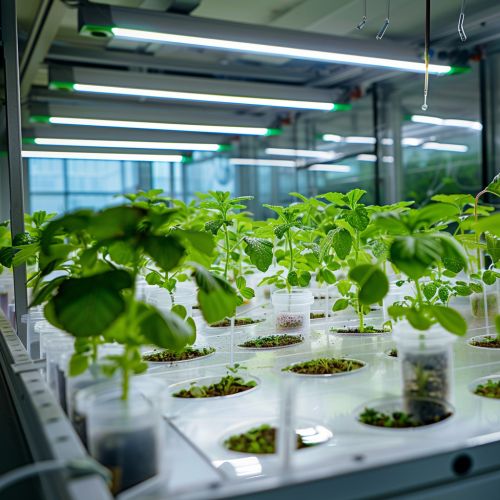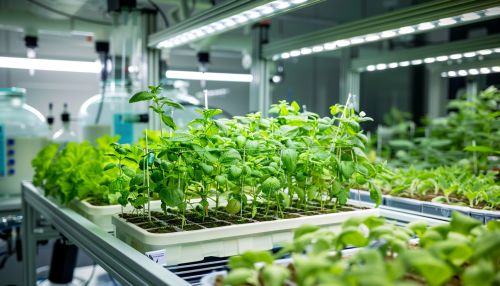Pharming (Genetics)
Introduction
Pharming, a portmanteau of "farming" and "pharmaceutical", is a branch of biotechnology where genetically modified organisms are used to produce pharmaceuticals. The process involves the introduction of a gene into an organism, allowing it to produce a therapeutic protein. This technique has been used in the production of a variety of medicines, including vaccines, antibodies, and enzymes.


History and Development
The concept of pharming was first proposed in the 1980s, following advances in rDNA technology. Early experiments focused on the production of human proteins in bacteria, but the limitations of this approach soon became apparent. Bacteria lack the necessary machinery to correctly fold complex human proteins, leading to the exploration of other host organisms.
In the 1990s, the focus shifted to transgenic animals and plants. The first pharming success story was the production of human antithrombin, a blood-clotting protein, in the milk of transgenic goats. This was followed by the production of other therapeutic proteins in plants, including vaccines against diseases such as hepatitis B and cholera.
Principles of Pharming
Pharming relies on the principles of genetic engineering. The first step is the identification of the gene that encodes the desired therapeutic protein. This gene is then inserted into the genome of the host organism, using techniques such as Agrobacterium-mediated transformation for plants, or microinjection and somatic cell nuclear transfer for animals.
Once the gene is integrated into the host genome, the organism is able to produce the therapeutic protein. The protein can then be extracted and purified for use in medicine. The choice of host organism depends on the nature of the protein. For example, complex proteins that require specific post-translational modifications are often produced in mammalian cells or transgenic animals, while simpler proteins can be produced in bacteria or yeast.
Applications of Pharming
Pharming has a wide range of applications in medicine. One of the most well-known examples is the production of insulin in genetically modified bacteria. Other applications include the production of vaccines in plants, antibodies in transgenic animals, and enzymes for the treatment of genetic disorders.
Pharming also has potential applications in the production of biopharmaceuticals. These are drugs that are produced using biotechnology, and include monoclonal antibodies, recombinant proteins, and gene therapies. Pharming offers a cost-effective and scalable method for the production of these drugs.
Challenges and Ethical Considerations
Despite its potential, pharming faces several challenges. One of the main challenges is the risk of contamination. There is a risk that genetically modified organisms could escape into the environment, leading to unintended consequences. This is a particular concern for pharming in plants, where pollen from genetically modified crops could potentially contaminate non-genetically modified crops.
There are also ethical considerations associated with pharming. The use of transgenic animals in pharming raises concerns about animal welfare. There are also concerns about the potential for exploitation of developing countries, where pharming could potentially be carried out at lower cost.
Future Prospects
The future of pharming looks promising, with advances in genetic engineering and biotechnology opening up new possibilities. One area of potential growth is the use of pharming for the production of personalized medicines. These are drugs that are tailored to the individual patient, based on their genetic makeup. Pharming could potentially provide a cost-effective method for the production of these personalized medicines.
